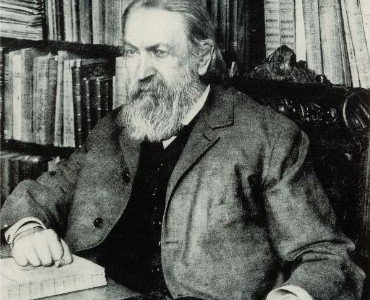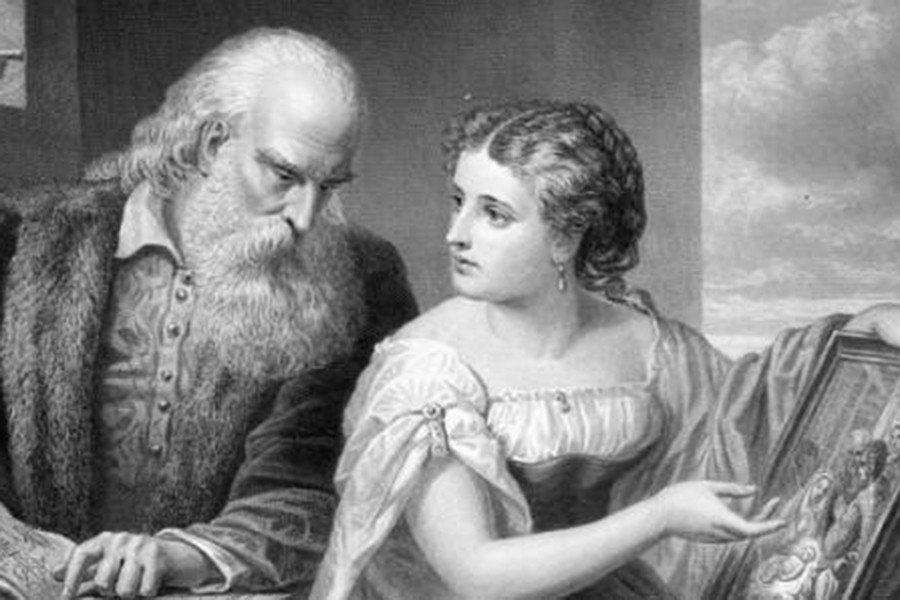Ernst Mach, one of the important representatives of the positivist understanding of science and the Viennese intellectual circle, was an important scientist and thinker who worked in the fields of physics, psychology, education and philosophy.
Ernst Waldfried Joseph Wenzel Mach was born on February 18, 1838 in Chirlitz, which was then part of the Austrian Empire. His father, Johann Nepomuk Mach, had studied philosophy at the Karl-Ferdinand University in Prague (today Karl University of Prague), where he had taken courses in a wide variety of fields. He earned his living as a tutor to the two sons of a baron.
Ernst Mach was also educated at home by his father, taking Greek, Latin, history, geometry, algebra, etc. until he entered high school in the fall of 1853. He graduated from high school in 1855 and began studying physics at the University of Vienna. In 1860, he completed his doctorate in physics and became a faculty member. After struggling with financial difficulties for a while, Mach, in his own words, “when his strength was about to be completely exhausted”, started to work as a professor of mathematics at the University of Graz in 1864, and in 1866 he became a professor of physics. In 1867, he became professor of experimental physics at the University of Karl-Ferdinand, where he remained until 1895, when he became professor of philosophy at the University of Vienna. After a stroke in 1898, he gradually becomes debilitated. He retires from the University of Vienna in 1901. After staying in Vienna until 1913, he moved to Vaterstetten to live with his son. He died there on February 19, 1916.
- You will be amazed by the growing graph of new Mastodon users every day
- “Inflation Reduction Act”: Revitalization of US industry at the expense of German companies
- The Russian leader will not attend the summit in pers
As the head of the chair of inductive sciences at the University of Vienna, where he received his doctorate in physics, Mach was influential on the ideas of the Vienna Circle, which would declare its views with the manifesto “The Scientific Understanding of the World” in 1929. This group of scientists such as Moritz Schlick, Otto Neurath, Rudolf Carnap and others came together to form the Vienna Circle, which was initially known as “The Verein Ernst Mach” (The Verein Ernst Mach).
Mach’s early physics work was on acoustics and the optical Doppler effect. Mach is best known to many for establishing the principles of supersonics, showing that a material object that exceeds the speed of sound will have an effect called a sonic boom, and for his eponymous “Mach number”, which is determined as the ratio of the speed of a moving mass to the speed of sound under the conditions in which the mass exists.
Mach played an important role in Einstein’s theory of general relativity with his criticisms of Newton’s concepts of absolute time and space. Einstein sees Mach as the predecessor of his work on the general theory of relativity and attributes the philosophical background of his theory to him. In The Science of Mechanics, published in 1883, Mach challenged the idea of absolute space, which was the basis of Newtonian mechanics. Newton states that absolute space, in its very nature, always remains fixed in the same and unmoving way, regardless of external things. For Mach, the concepts Newton used in his theory, such as absolute space and absolute time, in short, the concept of the absolute has no factual counterpart in the external world. Therefore, such empty elements should be regarded as metaphysical concepts and should be weeded out from scientific studies because metaphysics is considered one of the biggest obstacles to the development of science. Einstein, influenced by these ideas emphasized by Mach in his work and his discourse on the relativity of acceleration, focused his efforts on acceleration and gravity rather than on the Newtonian arguments that time and space are absolute.

Mach, who also worked on different lighting distributions, is the namesake of the optical illusion called Mach bands. One afternoon in the late 1800s, Ernst Mach looked carefully at several strips of homogeneously colored paper lined up side by side. As someone interested in perception, something caught his attention. Something seemed to be wrong with the strips; something was missing. He pulled the strips apart, looked at each one individually and then put them back together. Finally he could understand what was going on. Taken individually, the strips showed a homogeneous distribution of color, but side by side, there seemed to be a gradual shading: slightly lighter on the left, slightly darker on the right. (To see that each stripe in the figure actually contains a uniformly distributed brightness, one has to cover the stripes, leaving only one of them exposed.)
In the Mach band illusion, although the light intensity physically increases in a linear fashion as one moves from the darker to the lighter region, one observes that two dark and bright lines appear in the vertical areas corresponding to the two ends of the ramp in the function. These lines emphasize the transition/change between the dark and light region. In this context, lateral suppression mechanisms are thought to make contrast information salient at the boundary separating two areas with different light intensities and facilitate edge detection.
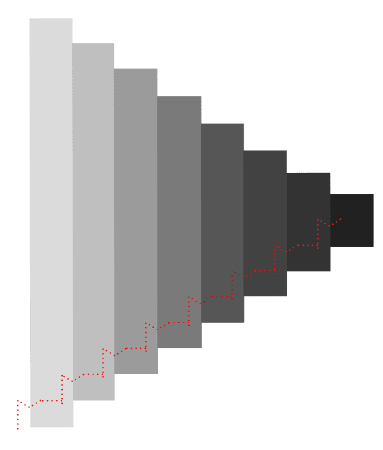
As we see in the Mach tapes, the mental representation of any physical feature that falls into the visual field is not created independently, but in dependence on the surrounding features. In the meantime, the exaggeration and encoding of the differences in the transition regions that vary between different values serves contouring and segregation. Contouring and segregation contribute to the aggregation of primitive image elements, such as lines of various sizes reflecting light at different wavelengths, into recognizable objects. Two other phenomena that play a critical role in this process are assimilation and perceptual grouping. At this point, however, it is important to emphasize that lateral suppression is not the whole story.
Mach bands appear in ramped transitions of increasing or decreasing light intensity, but disappear in sharp transitions, for example, in stimuli that change abruptly from black to dark gray or from dark gray to light gray. However, lateral suppression is theoretically expected to be maximized for these stimuli. Theories aimed at resolving this contradiction have emphasized that the effect cannot be explained solely by suppression mechanisms at the retinal level, and that the activity of groups of neurons in the primary visual cortex that serve line and edge detection is also important. The primary visual cortex is not only responsible for processing simple stimuli such as oriented lines (congruence of place and time), but also contributes to many higher-level perceptual processes such as the calculation of surface boundaries and figure-background discrimination.

Mach’s importance comes from his skeptical attitude towards the scientific understanding and studies of his time with his philosopher identity rather than his physics studies. The motif behind Mach’s critical attitude is his anti-realist ideas, which also frame his scientific approach.
Ernst Mach was also the other developer of empiricocriticism, which was introduced by Richard Avenarius. This philosophy, the second stage of positivism, denied that the senses were created by an objective reality that existed independently of the human being, and argued that objective reality was no more than a symbol of a set of sense compositions. Among those influenced by Mach’s ideas was a group in the Bolshevik party called the Russian Machians, which included Vladimir Bazarov, Alexander Bogdanov, Anatoly Lunacharskiy and others. This led Lenin to defend materialism against idealist deviations from Marxism and to write Materialism and Empiricocriticism. In addition, the third stage of positivism, logical positivism or neopositivism, was also strongly influenced by Mach’s ideas.
At the age of 15, he came across Kant’s Prolegomena to Every Future Metaphysics in his father’s library, and although the book made a strong and indelible impression on Mach, this impression diminished in the early 1860s when he read authors such as Berkeley, Lichtenberg and Herbart. The ideas underlying his philosophy are very much in line with Berkeley’s; as Lenin has shown, Mach’s position on many issues was nothing more than Berkeley’s philosophy expressed in words that sounded modern and scientific.
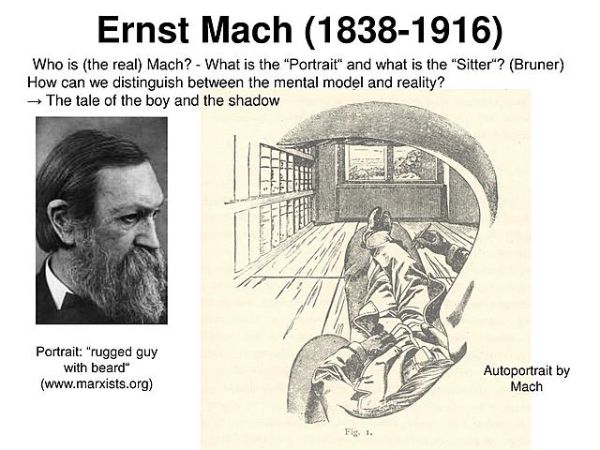
This idea that physics is concerned with the relations between human senses and not between objects that exist independently of human beings was at the heart of Mach’s philosophy. According to Mach’s philosophy, nature consisted of “elements given to us through our senses”. According to Mach, who said that there were no immutable things in nature, “the “thing” was only an abstraction; it was the name, the symbol, of a composition of the senses that we avoid changing or fix.
Mach, who says that the real elements are not bodies but senses, therefore denies that senses are produced by the influence of bodies on the sense organs: “Sensations are not produced by bodies, but rather elemental compositions (sense compositions) produce bodies.” This view, of course, also extends to the thought-brain binary. Mach quotes Avenarius, with whom he disagreed but found very close to his own ideas, as follows: “The brain is not the seat of thought, the center, producer, instrument or organ, carrier or substance, etc. of thought. Nor is thought a resident of the brain, its commander, its other half or side, etc., but it is also not a product of it, a physiological function of the brain, or a state of the brain in general.”
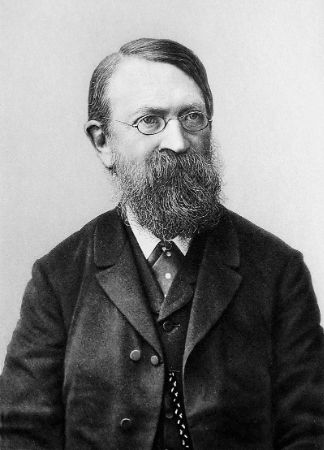
Mach’s taking the senses as the basis and matter as a derivative of the senses means the rejection of an objective reality that exists independently of the sensing human being. This philosophy, which destroys all of humanity except the thinking subject in one fell swoop, does not leave the thinking subject in one piece. As the Austrian physicist Ludwig Boltzmann, one of Mach’s most important opponents, tried to show, if we can only be sure of the senses that are directly given to us, we must reject not only all beings other than ourselves, but also all our thoughts about the past. There is only one sense that is directly given to us, and that is what we sense in the present. We have no way of knowing whether what we remember of the past actually happened or not.
One of the important concepts in Mach’s philosophy is the concept of economy of thought or economy of thought. The principle of economy of thought argues that in science and philosophy, theories that consume less intellectual energy should be preferred to others. When formulated as “of two theories explaining the same phenomenon, the one with fewer assumptions should be preferred”, this principle seems very plausible. Of course, scientific explanations should be free of unnecessary assumptions. But it would be wrong to think that the assumptions of any two theories can be directly compared in terms of lessness/abundance. Two theories trying to explain the same phenomenon may go in very different ways and make very different assumptions that cannot be directly compared. In this case, since we cannot compare the assumptions in terms of number, the question of which theory is more economical will remain purely subjective. Therefore, the principle of economy of thought cannot be a fundamental principle of the theory of knowledge; it can only exist as a tool to be applied in very special cases.
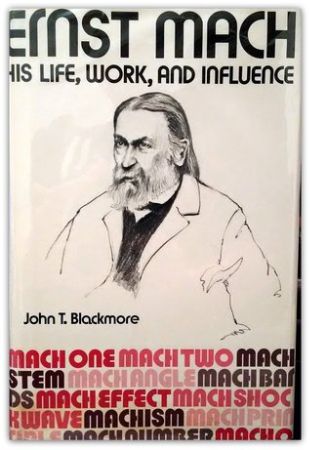
An important aspect of Mach’s philosophy of science is his ideas on the nature of physical laws, i.e. causality and necessity in nature: Concepts such as cause and effect are to be rejected. Phenomenon A is never the cause of phenomenon B. We only observe that phenomenon A is always followed by phenomenon B, which leads us to think that there is a necessity. According to Mach:
– “The concept of cause has been replaced by the concept of function. The study of the correlation of phenomena, the economic presentation of phenomena, is seen as the goal, and physical concepts are merely the means to the end.”
– “As I have repeatedly shown, all forms of the law of causality arise from subjective instincts; nature is not obliged to satisfy them.”
– “The force that drives the mind to complete an incompletely observed phenomenon is association. It is reinforced by repetition and appears to us as a foreign force, independent of our will and of this phenomenon (…). The fact that we think we can make a prediction thanks to such a law only proves that our surroundings are sufficiently uniform; it is no proof of the necessity of the fulfillment of this prediction.”
– “Apart from logical necessity, for example, there is no physical necessity.”
Mach’s philosophy is based on the idea that the senses are what really matter, and that the objective reality outside of us is the symbols we assign to the compositions of these senses. However, since Mach was also trying to be scientific, it is possible to find in Mach’s writings (contrary to this philosophy) statements that our senses and thoughts are shaped by a nature and that there are other people besides ourselves. Mach’s philosophy therefore does not constitute a coherent idealism; it is an eclectic philosophy, with concessions to materialism necessarily made in order to be scientific.
Sources
Basis and Subjective Idealist Conclusion: Can Mach be a Solipsist Thinker, Dictionary of Philosophy, Fundamentals of Visual Perception in the Context of Visual Illusions

